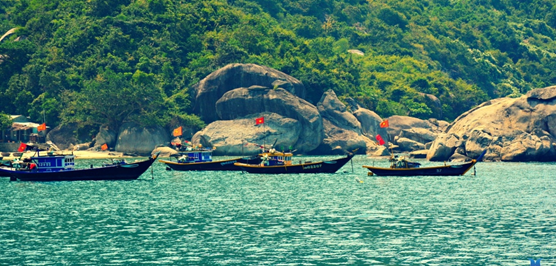The Cu Lao Cham Biosphere Reserve is one of the most important natural conservation areas in Vietnam, recognized by UNESCO as a World Biosphere Reserve in 2009. Located in the island district of Hoi An, Quang Nam Province, it is about 15 kilometers east of the city of Hoi An.
1. Natural Features:
Cu Lao Cham consists of a group of 8 islands, with the main island covering an area of approximately 15 km².
The area is home to a rich marine ecosystem, including coral reefs, seagrass beds, and mangrove ecosystems.
It is also inhabited by many rare species, particularly marine life such as sea turtles, sharks, and various types of fish.
2. Marine Ecosystem and Biodiversity:
Cu Lao Cham is one of the areas with the most diverse marine ecosystems in Vietnam. Key factors contributing to its biodiversity include:
Coral Reefs: Cu Lao Cham boasts vast natural coral reefs, which are home to many rare marine species such as grouper, tuna, pufferfish, and especially sea turtles.
Seagrass Beds: The islands also feature expansive seagrass meadows, providing habitat for a wide variety of marine life, including fish, mollusks, and other organisms.
Mangrove Forests: This vital ecosystem helps protect the coastline from erosion and is home to numerous species, including crabs, shrimp, and various bird species. Cu Lao Cham is particularly important as it hosts several rare marine species, including sea turtles, which are considered the symbol of the reserve. It is a critical area for sea turtle conservation, particularly for the green turtle and the hawksbill turtle, both of which are endangered.
3. Conservation and Sustainable Development Activities:
The Cu Lao Cham Biosphere Reserve not only focuses on nature conservation but also aims at sustainable development, balancing the protection of natural resources with economic growth for the local community.
Key activities such as ecotourism, sustainable fisheries, and heritage conservation are crucial aspects of the region’s development strategy.
4. International Importance:
UNESCO’s recognition has enhanced the value of conservation and marine ecology research in this area, while also promoting international cooperation in environmental protection and sustainable tourism development.

